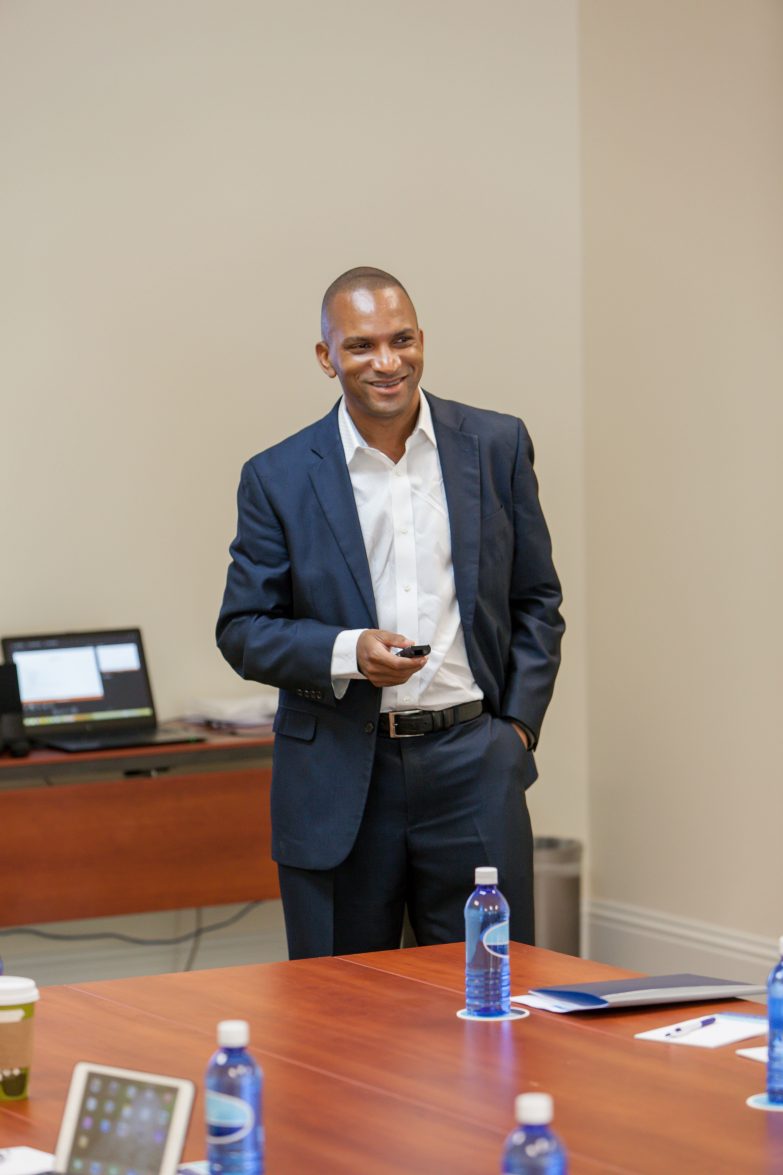CANTO Weekly Newsletter- BNamericas 11/11/16
One wall goes up, another comes down: Trump and Cuba – Cuba
CWC revenues down, customer base up in 2016 – Caribbean, Central America
Costa Rica industry chamber calls for a telecom ministry – Costa Rica
América Móvil sees key future role for 2G in LatAm – Mexico, Regional
Opera TV expands reach of Claro video in Latin America – Regional
One wall goes up, another comes down: Trump and Cuba – Cuba
The historic resumption of diplomatic relations between the United States and Cuba in 2015, strongly led by outgoing US president Barack Obama, heralded the beginning of the end of the 57-year freeze between the two countries.
What can we expect under president-elect Donald Trump?
Now that the political ice has been broken, the “businessman” Trump is likely to pursue commercial deals with Cuba, said Emilio Morales, president and CEO at The Havana Consulting Group. “Now is his chance to show off his abilities and break down the wall between the two countries.”
For Cuba, bolstering its budding relationship with its northerly neighbor and its markets is an essential strategy for improving economic growth. Now is Cuba’s chance to open its economy, attract financial capital and create employment, Morales told BNamericas, noting that support from old allies such as Venezuela, China and Russia is waning.
It may seem like a win-win situation, but Trump will still have to find political backing at home if he is to fully lift the US trade embargo on Cuba. And for that, Cuba’s demonstration of its own readiness to move toward an open market is crucial.
A first step could be the approval of a new law to allow small and medium-sized businesses to operate in Cuba, followed by a new electoral law which could make some room for Cuba’s moderate political opposition in the national assembly.
“This second signal will allow Trump to convince congress to lift the embargo, but that will happen once (Cuban president) Raúl Castro leaves office in 2018,” said Morales. “Trump has enough time to work on a successful strategy.”
In any case, we are unlikely to see the new US administration renege on the advances made under Obama – the new US embassy in Cuba, the allowance of remittances and flights to Cuba. But unless the Caribbean nation shows decision in moving away from its political past, further advances are unlikely.
CWC revenues down, customer base up in 2016 – Caribbean, Central America
Telecommunications company Cable & Wireless Communications (CWC) experienced a drop in revenues and the addition of 9,000 organic revenue generating units (RGUs) in the second quarter of this year.
In the preliminary results for the six months ending September 30, the company reported year-to-date revenues of US$1.14bn, a 2% year-on-year drop on a rebased basis. CWC explained that 10% growth in Jamaica offset declines in other markets resulting from competitive and macroeconomic factors, as well as lower managed services revenue.
Adjusted Ebitda was up 1.5% year-on-year, reaching US$411mn. Ebitda rose 4% sequentialy, or US$9mn, from 1Q16/17 to 2Q16/17, reflecting a margin improvement of 200 basis points.
CWC made a net loss of US$18mn in the quarter and US$124mn year-to-date. Property, equipment and intangible asset additions declined to 17% of revenue in 2Q16/17 from 25% in the same period of last year.
The telco explained that its BTC brand suffered significant infrastructure damage and business interruption in the Bahamas due to Hurricane Matthew in early October. Total repair costs were estimated at US$35-45mn. However, CWC grew its mobile customer base for the Bahamas by 4,000 or 1%.
In the mobile segment, which represents 40% of total revenue, postpaid subscriber growth was offset by a decline in the prepaid customer base, mainly due to the impact of competitive offers in Panama.
CWC’s video, internet, and telephony businesses saw the addition of 9,000 organic revenue generating units (RGUs) during the quarter. In the case of broadband the telco added 7,000 organic subscribers with 5,000 RGU additions in Jamaica and 2,000 RGU additions in Trinidad & Tobago.
Regarding the video segment, CWC added 1,000 RGUs in the quarter. This was driven by the DTH business in Panama. The increased RGUs from the DTH business were largely offset by declines in video RGUs in Barbados and Trinidad & Tobago as a result of increased competition.
Liberty Global completed the US$7.6bn acquisition of CWC in May of this year.
Costa Rica industry chamber calls for a telecom ministry – Costa Rica
Oscar Emilio Barahona, president of Costa Rican telecom chamber Infocom, proposed separating the vice ministry of telecommunications from the ministry of science and technology Micitt in order to boost the sector’s growth.
Given the fact that the telecom sector accounts for 3% of Costa Rica’s GDP, Barahona said there should be a ministry of telecommunications that oversees this industry without being directly linked to the science and technology ministry, local and Latin American media reported Barahona as saying at the ICT Expo IT-COMM event in Costa Rica.
Experts pointed to Colombia as an example of how the implementation of sector specific policies led to considerable growth of the digital economy.
Kemly Camacho, vice president of Costa Rica’s ICT chamber Camtic, asserted that, just as Colombia drafted a digitalization plan based on its social and economic needs, Costa Rica needs an integrated digital transformation process that involves several productive sectors.
Diego Molano Vega, former head of Colombia’s ICT ministry Mintic, noted that some key aspects in the country’s digital transformation were aligning ICT and government policies, pushing policies through events, involving all ministries in the execution of the government’s Vive Digital connectivity plan, and the fostering of public-private partnerships.
At the end last year, 96% of Colombia’s municipalities had fiber optic, according to regional media outlet Mediatelecom. And the number of SMEs with internet connections increased from 7% to 76% in the 2010-2015 period.
Mintic data shows that Colombia reached 14.4mn internet subscriptions in the second quarter of this year.
América Móvil sees key future role for 2G in LatAm – Mexico, Regional
In spite of the emergence of the 4.5G network, the 2G network will continue to play an important role in Latin America for several years, according to Marco Quatroze, director of added value services at América Móvil.
The 4.5G network will emerge and become popular in the following years since it has important applications for the internet of things, said Quatroze during the keynote panel at the Mexico Telecom Forum event. He noted that many devices in Latin America are still connected to the 2G network, such as payment terminals.
According to Quatroze, the 4G network provides the best connectivity available in Mexico at the moment, with Telcel’s network providing average speeds of 18.24Mbps. The executive stressed that the 4.5G will emerge before the much expected 5G becomes reality. Telcel’s 4.5G network has yielded speeds of 100-200Mbps in tests.
Quatroze also pointed out that data traffic has increased 180% from last year in Mexico. This means connectivity is a key issue for carriers, who are working on modernizing their networks in order to meet demand for greater speeds and less latency.
There is currently high connectivity demand in vehicles, hospitals, hotels, and schools. However, Quatroze forecasts that agriculture will soon become a driver for increased connectivity in Latin America.
Pedro Huichalaf, former head of Chile’s telecom watchdog Subtel, recently said that regulators have to anticipate changes in connectivity, as new sectors are emerging.
Opera TV expands reach of Claro video in Latin America – Regional
Press release
by Opera TV
November 4
Opera TV announced today a partnership with Claro video, a premium video on-demand service, to bring its service to millions of devices through participation in Opera TV’s Certification Program and distribution through the Opera TV Store. Through this strategic partnership with Opera TV, Claro video will dramatically increase its presence in the growing Latin American market by streamlining its app development and deployment efforts, making it available on a variety of ecosystems and devices where over-the-top (OTT) is enabled by Opera TV.
By partnering with Opera TV, Claro video will quickly and easily deploy the app in the Opera TV Store, making it available to millions of consumers across multiple regions, devices and ecosystems without needing to work with each device manufacturer and ecosystem individually. This will enable Claro video to speed up time-to-market and begin distributing content to consumers more quickly in the 16 countries of LATAM where the service will be available.
The Opera TV ecosystem is the world’s largest unified platform for connected TV devices spanning more than 40 million devices shipped each year. The Opera TV Store, an OTT experience for consumers, brings more than 1,000 apps to major OEM brands and pay-TV operators. The Opera TV Certification Program unites HTML5-based devices into one coherent ecosystem that is market-ready at the silicon level, making it easier to bring (OTT) services to multiple platform and device ecosystems. It provides app developers with unprecedented access to specifications and documentation for connected TV platforms, simple-to-use developer tools such as emulators and code snippets, and access to a global support team of experts. Unlike individual OEM or operator platforms, the Opera TV platform evolves quickly to keep pace with market requirements, supporting the complex needs of demanding OTT services.
“According to Digital TV Research, OTT service revenues in Latin America is expected to double in the next five years, reaching $2.91 billion by 2020,” said Aneesh Rajaram, CEO of Opera TV. “Latin America is a strategic and important region for Opera TV and our partnership with Claro video enables us to bring top content to consumers enjoying the Opera TV experience.”
Certified apps are distributed through Opera TV partners, which include consumer electronic device manufacturers as well as the fast-growing pay-TV and free-to-air operators. Unlike other programs, this is a multi-silicon, multi-device, multi-industry approach, all aimed at reaching viewers in their living rooms on any device.
“We are very pleased with this alliance with Opera TV. Our objective is for Claro video to have wide visibility with users who will enjoy the variety of content on a platform that includes movies and series on demand and an extensive catalog with concerts, sports and children’s programs,” said Andres Vazquez del Mercado, CEO of America Movil Content Media (AMCO). “The Claro video service can be enjoyed on TVs, tablets or smartphones with internet connection. It is available at clarovideo.com from any browser, or by using the app on Android, iOS and Windows tablets and phones, Xbox One and 360 game consoles, Smart TVs, Claro player, Apple TV and Chromecast.”
Juliana Psaros, who is driving Opera TV’s content acquisition efforts in Latin America, will participate in a panel titled “The Revolution of Connected TV Business?” taking place Thursday, November 3 at 16:15 at the NextTV CEO Latin America Summit in Miami. For a full list of certified applications, please contact the Opera TV team. For more information on the Opera TV Certification Program, or to start the process, please visit http://www.operasoftware.com/campaign/certification-program.
Copyright 2015 Business News Americas
CANTO
#67 PICTON STREET, NEWTOWN, PORT OF SPAIN, TRINIDAD, W.I.
Tel: (868) 622-3770/4781 Fax:(868) 622-3751 e-mail: cramlal@canto.org Website: www.canto.org
The information presented and opinions expressed herein are those of the author and do not necessarily represent the views of CANTO and/or its members


